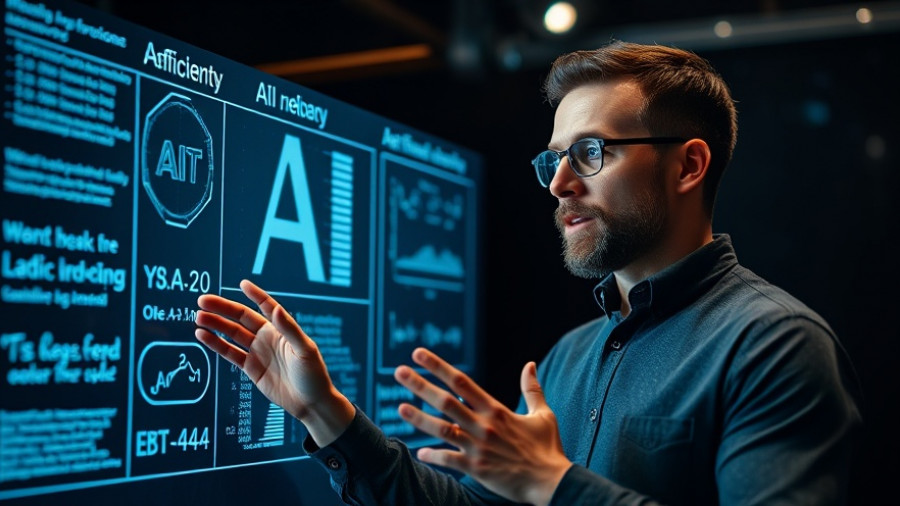
Building Trust in AI Research Agents: The Hybrid RAG Approach
As the legal landscape evolves, organizations are continuously faced with complex challenges—one being how to manage vast amounts of data during e-discovery processes. When a former employee files a discrimination suit, companies must dissect and analyze numerous documents, from emails to text messages, to build a defense. In this environment, the role of AI research agents becomes critical.
In 'Building Trustworthy AI Research Agents with Hybrid RAG,' the discussion dives into AI's role in legal discovery, exploring key insights that sparked deeper analysis on our end.
Harnessing AI to Navigate E-Discovery
During the e-discovery phase, legal teams must ensure that they preserve, collect, and securely share all relevant information. This includes organizing thousands of files from various platforms such as Outlook, Gmail, and Box. Traditionally, this overwhelming task can consume considerable time; however, AI research agents can act as powerful allies. They enable legal teams to filter and summarize data efficiently, significantly expediting the process of deriving actionable insights.
The Importance of Trustworthiness in AI Findings
Yet, there’s a catch: the findings yielded by AI agents must be trustworthy, or they risk being deemed inadmissible in court. It is essential for these agents to not only provide insights but also to elucidate how those insights were derived. They must clearly indicate which documents were included, the timestamps of these documents, and the keywords that triggered the data retrieval. In essence, trust in AI outputs is built upon strong transparency and accountability.
Moving Beyond Simple RAG
The conventional use of Retrieval-Augmented Generation (RAG) models—where AI converts vast amounts of data into vector embeddings—doesn't sufficiently address the intricacies of legal data. Considering structured versus unstructured data, along with various file formats like images, videos, and audio files, illustrates the need for further sophistication in AI tools. Engaging with a hybrid approach enhances data integration. A hybrid RAG method allows agents to perform semantic searches as well as exact keyword filtering, ensuring that the nuances of key terms—like "noncompete" or "harassment"—are not overlooked in the legal data.
Precision and Traceability in AI Outputs
The combination of semantic search capabilities with structured search features heightens the precision of AI outputs. This is especially crucial in industries where trust is foundational, like law and medicine. A sophisticated hybrid model can access control, change history, and other essential file metadata, leading to more reliable and defensible AI-generated insights.
The Future of Trustworthy AI in Legal Frameworks
As industries continue to integrate AI into their operations, it is not enough to solely create intelligent systems. Stakeholders must prioritize building AI agents that clients can trust. Those considering investments in AI technologies must understand the vital implications of trust and transparency alongside AI's capabilities. As technology advances, the increasing complexity of AI solutions necessitates a proactive approach to ensure that the outputs these systems provide are not just clever, but also reliable and defensible.
The ongoing dialogue around AI in sectors like law serves as a compelling reminder of the delicate balance between technological innovation and ethical responsibility. Only by adhering to these standards of trust can we unlock the full potential of AI research agents.
 Add Row
Add Row  Add
Add 




Write A Comment